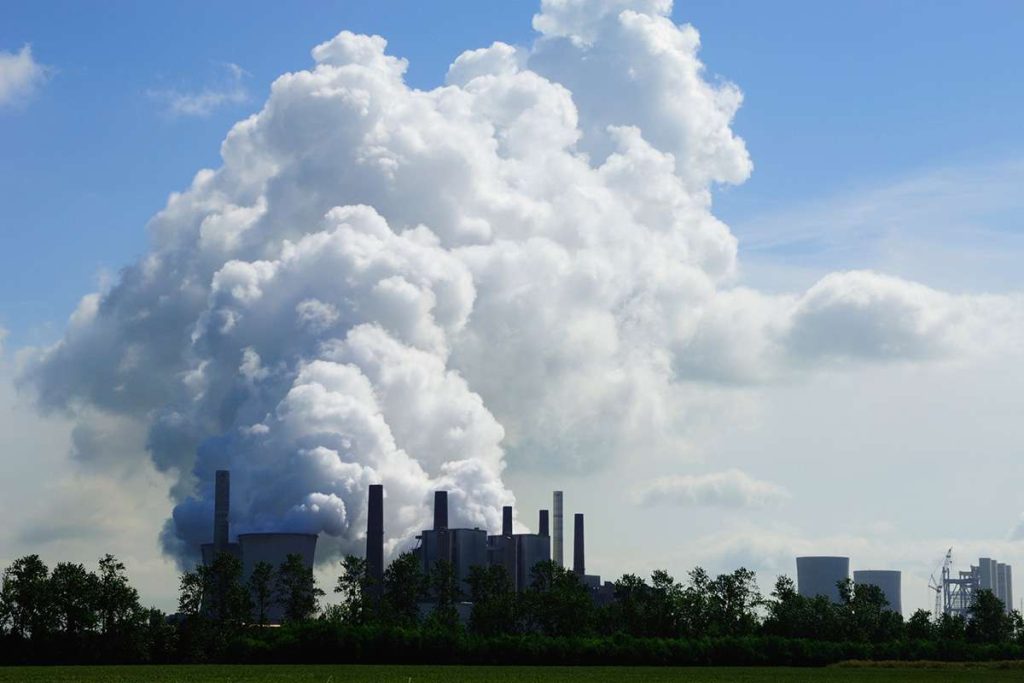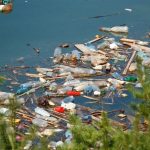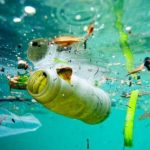Thermal pollution is the degradation of water quality by any process that increases the ambient water temperature. The increase in temperature (a) decreases the dissolved oxygen/oxygen supply, and (b) affects ecosystem composition.
Sources:
1) Industries: A common cause of thermal pollution is the use of water as a coolant by power plants and industrial manufacturers.
i) Hydro-electric power plants
ii) Coal fired power plants
iii) Nuclear power plants
iv) Industrial effluents from power, textiles, paper and pulp industries
2)Urban runoff : storm water discharged to surface waters from roads and parking lots can also be a source of elevated water temperatures.
3) Domestic sewage: municipal sewage normally has a higher temperature.
Effects: The warmer temperature decreases the solubility of oxygen and increases the metabolism of fish. Tropical marine animals are generally unable to withstand a temperature increase of 2 to 30C and most sponges, mollusks and crustaceans are eliminated at temperatures above 370C. When a power plant first opens or shuts down for repair or other causes, fish and other organisms adapted to particular temperature range can be killed by the abrupt rise in water temperature known as ‘thermal shock’.
· Elevated temperature typically decreases the level of dissolved oxygen (DO) in water. The decrease in levels of DO can harm aquatic animals such as fish and amphibians.
· Thermal pollution may also increase the metabolic rate of aquatic animals, as enzyme activity, resulting in these organisms consuming more food in a shorter time than if their environment were not changed. In Australia , where many rivers have warmer temperature regimes, native fish species have been eliminated, and macro invertebrate fauna have been drastically altered and impoverished.
· An increased metabolic rate may result to fewer resources; the more adapted organisms moving in, may have an advantage over organisms that are not used to the warmer temperature. As a result one has the problem of compromising food chains of the old and new environments. As a result Biodiversity can be decreased.
· Releases of unnaturally cold water from reservoirs can dramatically change the fish and macro invertebrate fauna of rivers, and reduce river productivity.
· Increase in toxicity: The rising temperature changes the physical and chemical properties of water. A100C rise in temperature doubles the toxic effect of potassium cyanide.
· Interference with reproduction: In fishes, several activities like nest building, spawning, hatching, migration and reproduction etc. depend on some optimum temperature. For instance, the maximum temperature at which lake trout will spawn successfully is 8.90 C. The warm water not only disturbs spawning, but also destroys the laid eggs.
· Increased vulnerability to disease: Activities of several pathogenic microorganisms are accelerated by higher temperature. Hot water causes bacterial disease in salmon fish.
· Invasion of destructive organisms : Thermal pollutants may permit the invasion of organisms that are tolerant to warm water and highly destructive. Invasion of shipworms into New jersey ’s Oyster Creek constitute the best example.
· Many of the planktons, small fish and insect larvae that resucked into the condenser along with the cooling water are killed by the thermal shock, increased pressure and water viscosity.
Control measures:
· Thermal pollution can be controlled by passing the heated water through a cooling pond or a cooling tower after it leaves the condenser. One method is to construct a large shallow pond. Hot water is pumped into one end of pond and cooler water is removed from the other end. Another method is using a cooling tower.
· During warm weather, urban runoff can have significant thermal impacts on small streams, as storm water passes over hot parking lots, roads and sidewalks. Storm water management facilities that absorb runoff or direct it into groundwater, such as bioretention systems and infiltration basins, can reduce these thermal effects.
Retention basins tend to be less effective at reducing temperature, as the water may be heated by the sun before being discharged to a receiving stream.


